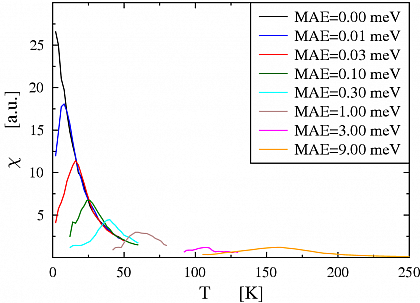Structural, electronic and magnetic properties of nanowires
(This project is finished.)
Size reduction in matrial induces novel physical properties in the nanometric range. Nanowires are one of the most important objects of nanotechnology. The ultimate nanowire is a system of atoms essentially one atom wide and of a length which is large to the the interatomic distance. A stepped substrate is the most common template to create 1D nanostructure. The progress achieved in the fabrication of artificial nanostructures enabled the preparation of extended ultrathin nanowires which are uniform in thickness and perfect at the atomic scale. The main idea is to exploit the 1D symmetry provided by an array of parallel steps on a vicinal surface along which the deposited material can nucleate, a procedure called step decoration. The Cu(111) stepped surface with an embedded Fe chain can be
considered as an exemplary template for the deposition of other 3d transition metal (TM) atoms to form a chain on top of this embedded Fe chain (cf. Fig. 1). The growth mechanism of such templates was investigated by Mo, Guo et al. by means of DFT calculations and by scanning tunnelling microscopy.[1,2]
We study on the magnetic ground states and the magnetic coupling in TM-Fe wires. The analysis of the exchange coupling and of the magneto crystalline anisotropy energy (MAE) allows to set up a classical Heisenberg model to study finite temperature effects (cf. Fig. 2).
[1] Yina Mo, et al., PRL 94, 155503 (2005)
[2] J. Guo et al.,Phys. Rev. B 73, 193405 (2006)

Figure 1: TM-Fe wires on vicinal Cu(111) surface. A one-atom wide TM chain (yellow) is formed on top of an embedded Fe chain (red).

Figure 2: Magnetic susceptibility of the embedded Mn-Fe wire for different values of MAE.

